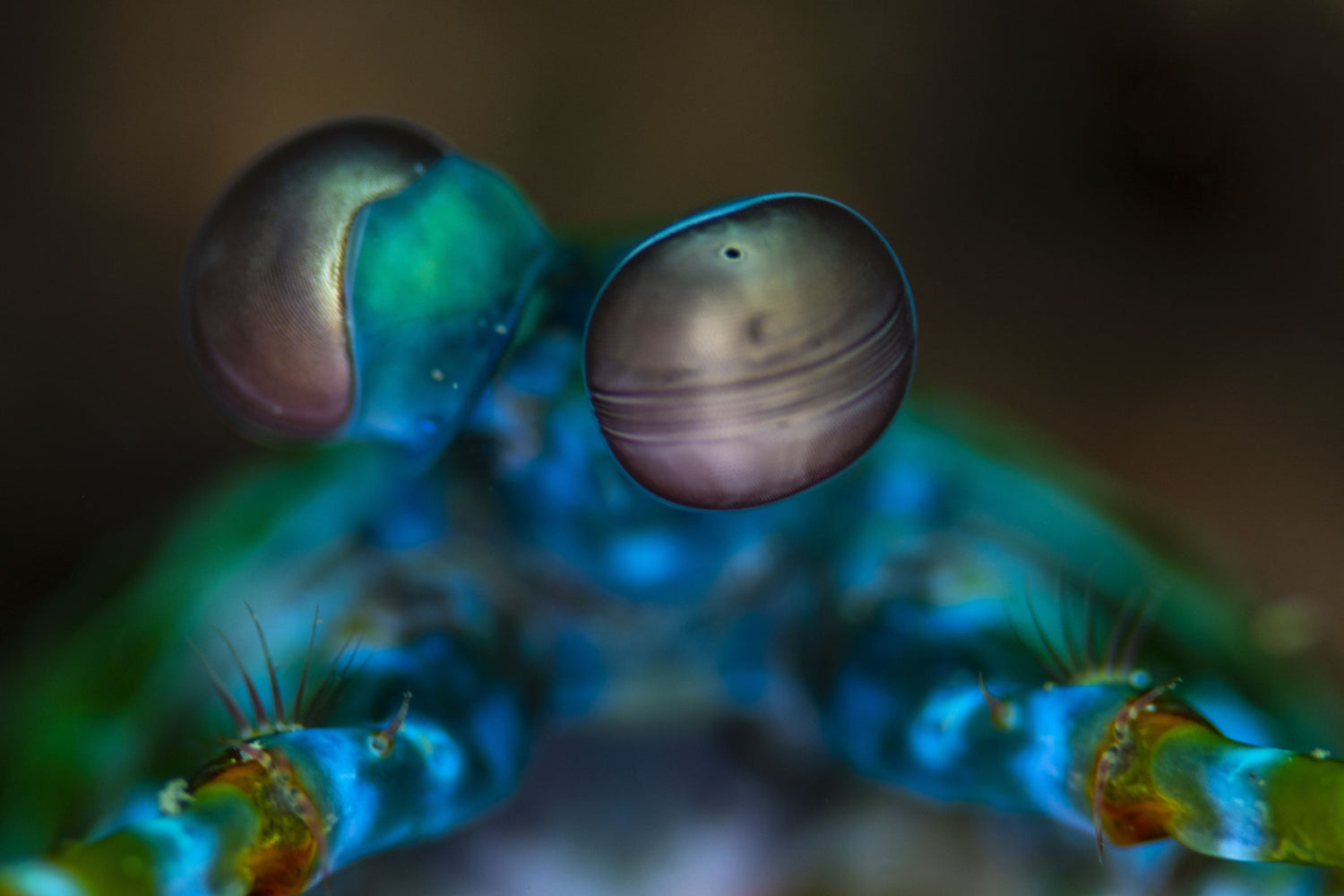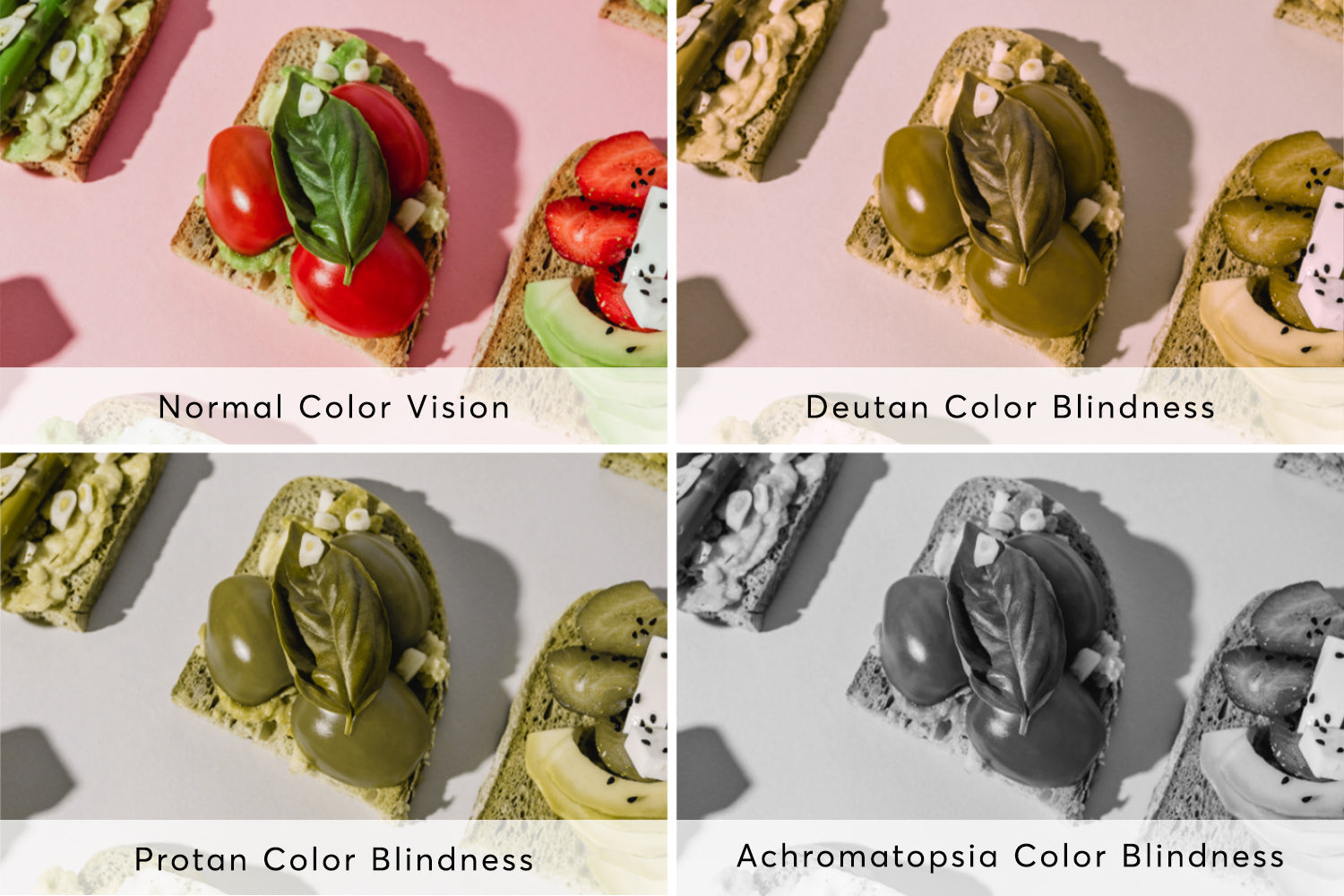There’s a whole world of color under the sea. From vibrant coral reefs to the colors of the nearly-infinite supply of sea-life, underwater expeditions can yield some pretty technicolor experiences. Some marine animals, however, see their world a little differently. You’d be surprised to learn that some of nature’s aquatic beings are actually color blind. We haven’t quite cracked the code on making EnChroma color blind glasses for whales, read on to learn about the unique color vision of some of the oceans’ most interesting animals.
The color and shape shifting octopus

Octopuses are incredibly adept at camouflaging themselves for survival. These eight-limbed cephalopods adapt their color to match their surroundings, making them nearly invisible to prey and predators. While they can effortlessly change their colors to blend into their environment, you’d be surprised to learn that the eye of the octopus is color blind!
Being able to adapt both color and texture to the surface on which the octopus is resting requires a very precise way of recognizing color. Known as an extremely intelligent animal, the octopus’ ability to blend with the colors of the ocean without being able to physically see them has long perplexed scientists. So, just how does the octopus accomplish this trick?
One idea is that the octopus might actually “feel” the color through their skin, not through their eyes. Scientists have discovered light receptive proteins called ‘opsins’, commonly found in the eyes of animals, are also found in the skin of the octopus. It’s theorized that the proteins in their skin may be able to pick up color that their eyes do not, allowing them to adjust their camouflage cell-by-cell to better match their surroundings.
Another theory discussed in a 2016 study: Weird pupils let octopuses see their colorful gardens is that the strange barbell shaped pupil of the octopus actually gives it some sense of color vision because chromatic aberration caused by the unusual pupil shape causes different colors to focus at different positions within the octopus eye. The unusual shape of the octopus pupil is thought to reduce its visual acuity but enables the octopus to gain a rudimentary form of color vision.
Learn more about color blindness.
The octopus can change color and texture to match its surroundings
The unusual color vision of the Mantis shrimp
The Mantis shrimp, a crustacean, has one of the most unique vision systems in the animal kingdom. Most animals, sea, land, or otherwise, have no more than three, sometimes four, types of light-sensitive cone cells. These cone cells are responsible for sensing light and, depending on the kinds of cone cells present, determining color. The Mantis shrimp, however, has 12 types of color sensitive cone cells---four times as many as a human being!
Many people think the Mantis shrimp must have a highly sophisticated sense of color, but a 2014 study: Mantis shrimp's super colour vision debunked found they actually have very poor color vision. Humans may be limited to having just three types of cone cells, but we also have fantastically powerful brains that are capable of comparing the signals received from each cone type, enabling us to see up to 1 million distinct shades of color. The Mantis shrimp lacks the ability to make these comparisons, so, essentially it can only see 12 colors.

Color blindness in dolphins & whales
Animals typically have multiple types of light-sensitive cone cells that are used for detecting color. To see color at all (i.e. for normal color vision), there must be at least two types of cone cells present. For example, the human eye contains three types: red-sensitive L-cones, blue-sensitive S-cones, and green-sensitive M-cones. Together, these cones allow the human eye to perceive millions of colors across the spectrum. Unfortunately, for whales, dolphins, and many other large aquatic mammals, this is not the case. Are dolphins and whales color blind?

These animals' color vision system only includes one type of light-sensitive cone cell, the red-sensitive L-cone. This type of vision is call L-cone monochromacy. As with other marine animals, this lack of color vision can cause complications when navigating colorful underwater landscapes. It is believed that dolphins often use their keen echolocation skills to compensate for the difficulties that come with color blindness. While not a direct replacement for color vision, echolocation can help the animals “see” their environment better.
Novel light detectors in the deep
A recent study has also revealed a new type of light-sensitive cell in the eyes of deep sea fish that is mainly used in low light or twilight. Instead of having separate rod cells used to see in dim light and cone cells to see in brighter light, the Pearlside fish’s light-sensitive cells are combined into a single, more-efficient photoreceptor. These “rod-like cone” cells are finely tuned to these fish’s natural environment. This study opens a new world of potentially different vision systems from the rod and cone systems that it is assumed all animals have.
Many marine animals, including the octopus and the Mantis shrimp, also have special cone cells capable of detecting the polarization state of light. On land, most light is unpolarized or randomly polarized, but the underwater world is rich with polarized light which can be horizontally or vertically linearly polarized, or right or left circularly polarized. The ability of marine animals to see polarized light is thought to be useful for underwater navigation and for being able to detect light reflected from the scales of fish.
The world's oceans are some of the least understood parts of the planet. While we know many species and their place in the deep, there’s still so much to discover about the world below the surface. From animals like the mantis shrimp with their baffling array of cone cells to the octopus whose color blind expertise in camouflage is yet to be fully understood, the ocean holds secrets that are waiting to be plunged.
Understanding the color vision of creatures in different environments like fishes shows us the myriad ways that nature is able to adapt and extract information in challenging situations. Insights from nature are key to understanding the vital role of light and vision in how humans perceive color and is an area of intense research as EnChroma advances its ability to serve the needs of different types of color blindness in different lighting conditions.
Are dogs color blind? Learn more
There’s a whole world of color under the sea. From vibrant coral reefs to the colors of the nearly-infinite supply of sea-life, underwater expeditions can yield some pretty technicolor experiences. Some marine animals, however, see their world a little differently. You’d be surprised to learn that some of nature’s aquatic beings are actually color blind. We haven’t quite cracked the code on making EnChroma color blind glasses for whales, read on to learn about the unique color vision of some of the oceans’ most interesting animals.



